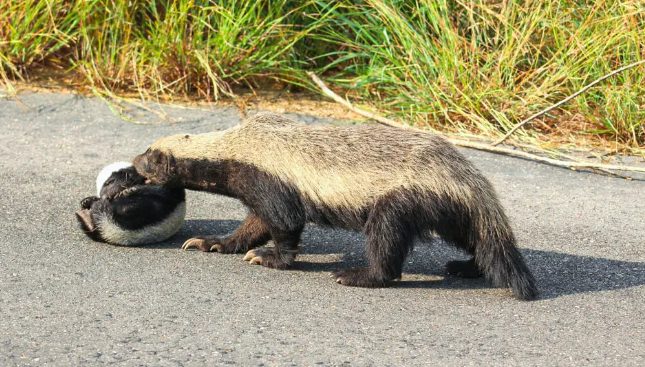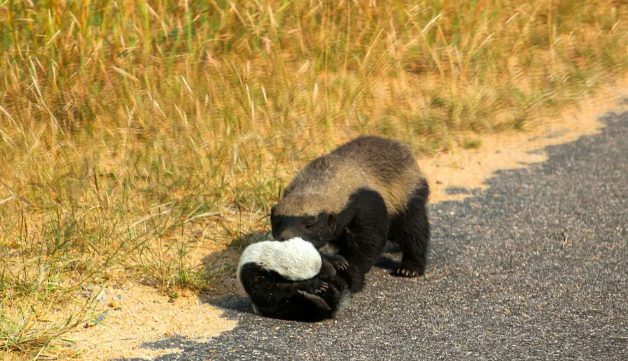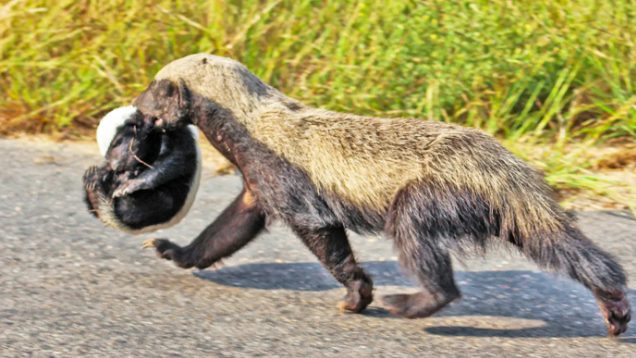An elusive honey badger mother carries her tiny cub in her jaws in broad daylight, perhaps she is in search of a safer den to hide the vulnerable cub.
“We were in the Kruger National Park for a day visit. The general game we saw was plentiful. Though seeing something unusual and rare is always more exciting. All Kruger lovers have a “bucket list” of animals they would love to see. A honey badger has always been one of our bucket list animals to see in the wild.”

“We were on our way out of the park at Malalane Gate on this particular day. My husband, driving behind one other car, noticed something jogging casually along the road towards us. As soon as we realized what it was, the happiness turned to excitement! A Honey Badger.”

Honey badgers are nocturnal animals. Seeing one during the day is unusual, but not unheard of. These ferocious balls of fur may appear cuddly and cute. Don’t be fooled; they certainly pack a punch. Fearless and ferocious, they are the true definition of “dynamite comes in small packages.”

“When we saw her from a distance, we were already jubilant. When she got closer, we noticed she was carrying a small little ball in her mouth, as if it couldn’t get any more unique. Which, to our astonishment, was this gleaming and spotless little baby. We made a U-turn and drove alongside her in awe.”
Honey badgers will typically breed and give birth between September and December. As they have a very short period of gestation, the process from mating to birth will all take place within this period. The moms will then give birth to a very small litter, consisting of typically one and, on occasion, two cubs.

“After a few seconds of following the mother, she turned off the road and disappeared into the bushes while we stared at each other and had to take a few minutes to focus again and get back to reality. We then left Malalane Gate with high spirits and smiles all around. The bush never ceases to amaze.”
Honey badger cubs are kept safe in burrows dug by their mothers. These cubs are born blind and rely solely on their mother for survival. She will move her cub to new den sites every two to five days to ensure the cub’s safety. The mother will hold her cub in her jaws, which causes no harm to the little one. After about two months, the cub will be able to accompany mom on foraging excursions and will no longer need to be carried around.
Source: https://latestsightings.com








